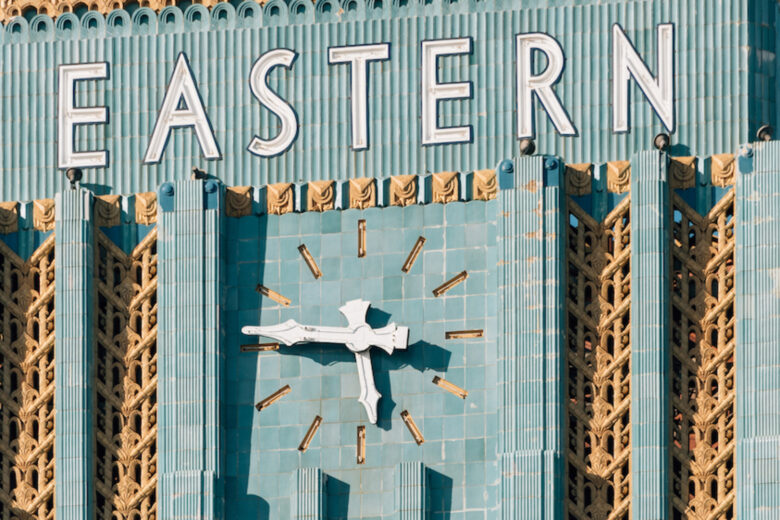During the short span of the interwar era, Art Deco reshaped numerous cities characterized by their ample use of concrete, glass, and angular designs. In this period, from New York to Buenos Aires, these seven structures stand as testaments to an optimistic portrayal of modernity, preserved in stone just prior to widespread turmoil.
Emerging during the interwar period, Art Deco brought forth a contemporary style characterized by sleek lines, cutting-edge materials such as glass, metal, and lacquer, along with opulent interior designs. The following seven structures scattered across the globe serve as exceptional examples showcasing the core tenets of this influential architectural trend from that era.
th
century.
Do you like architecture? Here are
Here are some articles you might find intriguing:
:
-
The five most breathtaking creations by Japanese architect Tadao Ando worth visiting globally include:
-
In Paris, this residence designed by architect Le Corbusier stands out as one of his most flawless creations—recently, it has completed a significant renovation.
-
Brazilian architect Oscar Niemeyer’s 7 most stunning works to see around the world
The Palais de la Porte Dorée, located in Paris,
Created for the 1931 Colonial Exhibition, this
Parisian building
has a façade with bas-reliefs of exotic flora and fauna. This was at a time when the French colonial empire was already beginning to falter and crumble. Albert Laprade’s work combines geometric elegance with representations of a world that Europe still thought they would rule forever. Its tropical aquarium and colourfully patterned interiors make it a remarkable example of French Art Deco.
The Empire State Building, located in New York City, stands as an iconic landmark.
Launched in 1931, the Empire State Building continues to be the ultimate representation of
A
rt Deco masterpiece
. Its 102 storeys rise with geometric elegance into the New York skyline. The front of the skyscraper, with its slender vertical lines and repeating motifs, creates a dizzying chasing perspective effect. The lobby, with its marble walls and gilded ceilings, creates a striking contrast between luxurious intimacy and monumental grandeur. Built in just 410 days, this skyscraper remains one of the most impressive architectural achievements of its time.
The Chrysler Building, New York
Smaller than the Empire State Building but perhaps even more visually striking than its neighbour, the Chrysler Building (1930) shines with its crown of stainless steel triangular arches, metallic expressions of an already faltering prosperity. The eagles adorning the roof corners and the car-inspired motifs celebrate an industry soon to enter its darkest hours. William Van Alen completed this skyscraper a few weeks before the crash of 1929, like a final firework display before the economic darkness.
The Eastern Columbia Building in Los Angeles
In Los Angeles, the skyline gleams with a striking turquoise hue, thanks to the Eastern Columbia Building, which looms majestically over the city at thirteen stories tall since 1930. Architect Claud Beelman designed an opulent structure featuring a sequence of alcoves that direct one’s view toward a distinctive four-faced clock tower—a hallmark of this urban setting. Throughout the day, the terracotta tiles catch and alter the California sunlight. Adorning the summit, intricate golden zigzags enhance the dramatic appeal of both the exterior facade and its lavishly decorated interior spaces.
The Daily Express building located in Manchester
The old Daily Express Building (1939) in
Manchester
– now occupied by Goldman Sachs – was a more futuristic take on the Art Deco school of architecture. Its black and chrome glass façades create a dramatic effect, especially striking at night. The work of Sir Owen Williams stands out for its avant-garde structure, which abolishes the distinction between wall and window. The interior, was designed to house newspaper presses, and thus combines industrial functionality with aesthetic refinement. This building remains one of the best British-made examples of the style, with its curtain-like front that foreshadows modern architecture.
The Napier City Theatre, located in New Zealand
After being reconstructed following the catastrophic earthquake of 1931, this theater stands as a testament to the rejuvenation of an entire urban center guided by this architectural approach. Nicknamed the “Art Deco Capital of the Pacific,” Napier transformed its misfortune into an advantage. The town hall seamlessly merges Western geometric designs with stylized Māori components. Inside, luxurious features remain intact: vibrant mosaics, carved relief sculptures, and meticulously refurbished vintage light fixtures.
The Palacio Barolio, located in Buenos Aires, stands out as an iconic structure.
Finished in 1923, this Argentine edifice combines elements of Art Deco and Neo-Gothic styles. The 100-meter tall construction was designed by Italian architect Mario Palanti.
architectural translation of Dante’s
Divine Comedy
. Its 22 storeys correspond to the songs of the poem, with a three-part split symbolising hell, purgatory and paradise. The lighthouse at the pot, visible as far away as Uruguay, completes this mathematically calculated composition. The proportions of the building follow the golden ratio, and the façade is peppered with allegorical details.
